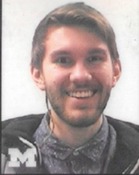Variability of Radiomics Features with O-MAR Iterative Reconstruction
Presentations
PO-GePV-I-59 (Sunday, 7/10/2022) [Eastern Time (GMT-4)]
ePoster Forums
Purpose: The translation of radiomics research into clinical practice has largely been hindered by limited reproducibility and validation due to the dependence of radiomics features on various imaging parameters. This study sought to quantify the dependence of radiomics features on the orthopedic metal artifact reduction (O-MAR) reconstruction algorithm.
Methods: Computed tomography (CT) scans were acquired of a Gammex Dual Energy Characterization phantom with seven inserts of varying electron densities: air, lung-300, adipose, Solid Water, aluminum, titanium, and stainless steel. Circular and annular regions of interest (ROIs) were placed within and surrounding the inserts in each of 45 slices. A total of 94 2-dimensional features were calculated for each central and surrounding ROI for each insert using Pyradiomics v2.0.1. Features from center and surrounding ROIs were compared between scans acquired with and without O-MAR, and features from the surrounding ROIs for each insert were compared to those with the Solid Water insert to quantify artifact reduction.
Results: Images containing materials less dense than titanium resulted in identical images regardless of whether O-MAR was implemented; however, 92.5% and 96.8% of features reflected significant differences for the surrounding ROI for titanium and stainless steel, respectively. Comparing features extracted from the surrounding ROI for titanium and stainless steel inserts to Solid Water, 92.5% and 96.8% of features reflected significant differences, respectively. When O-MAR was used, 66.7% and 94.6% of features reflected significance. These results indicate that when artifacts are not detected for materials of suitably low densities (less than titanium), images remain unchanged but will change in texture for higher densities as artifacts are removed. For increasingly high densities (stainless steel), artifacts are not entirely removed.
Conclusion: Understanding the effects of O-MAR on radiomics features may aid researchers in assessing which images may be suitable for radiomics research when images are acquired with O-MAR.
Keywords
CT, Reconstruction, Quantitative Imaging
Taxonomy
Contact Email



